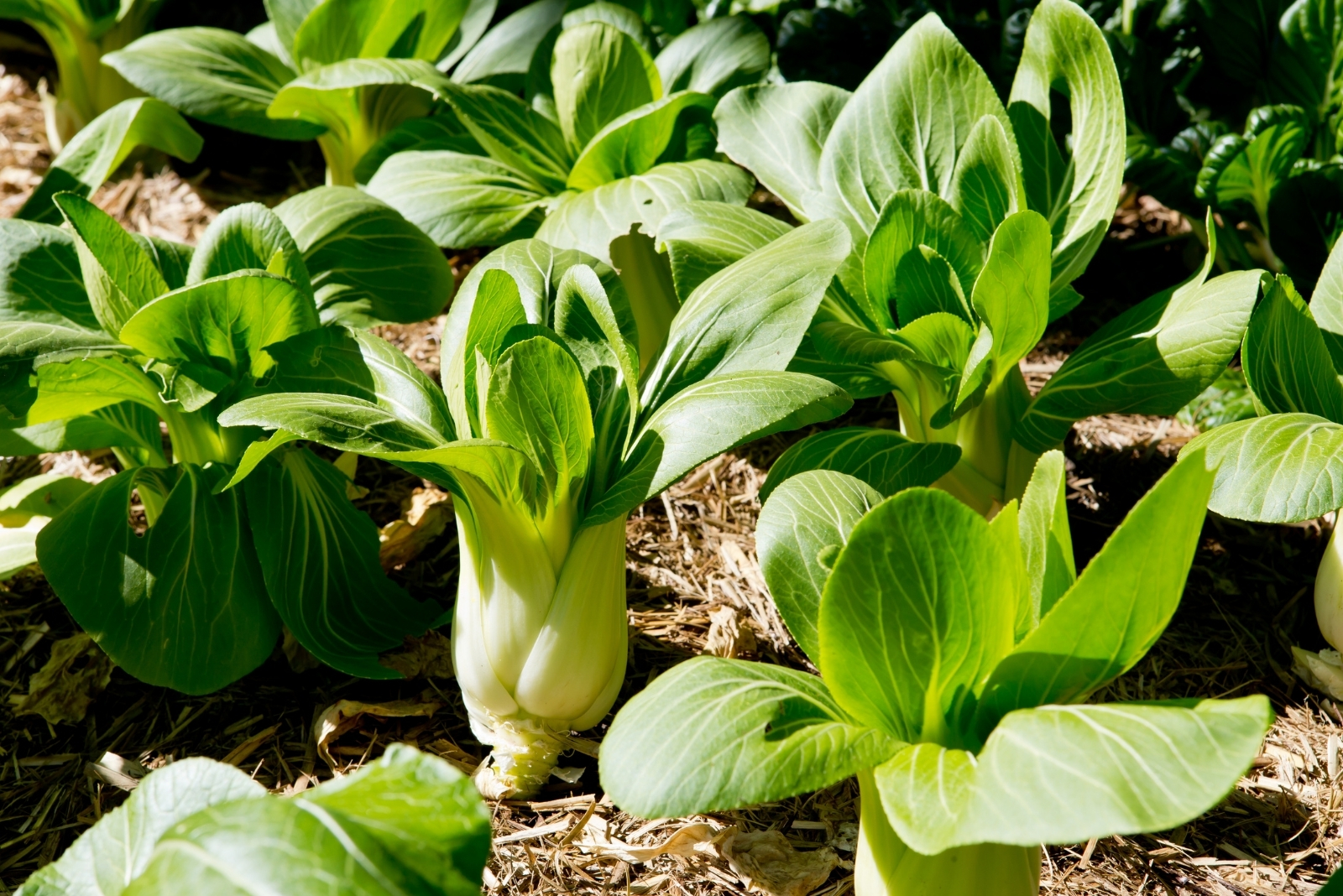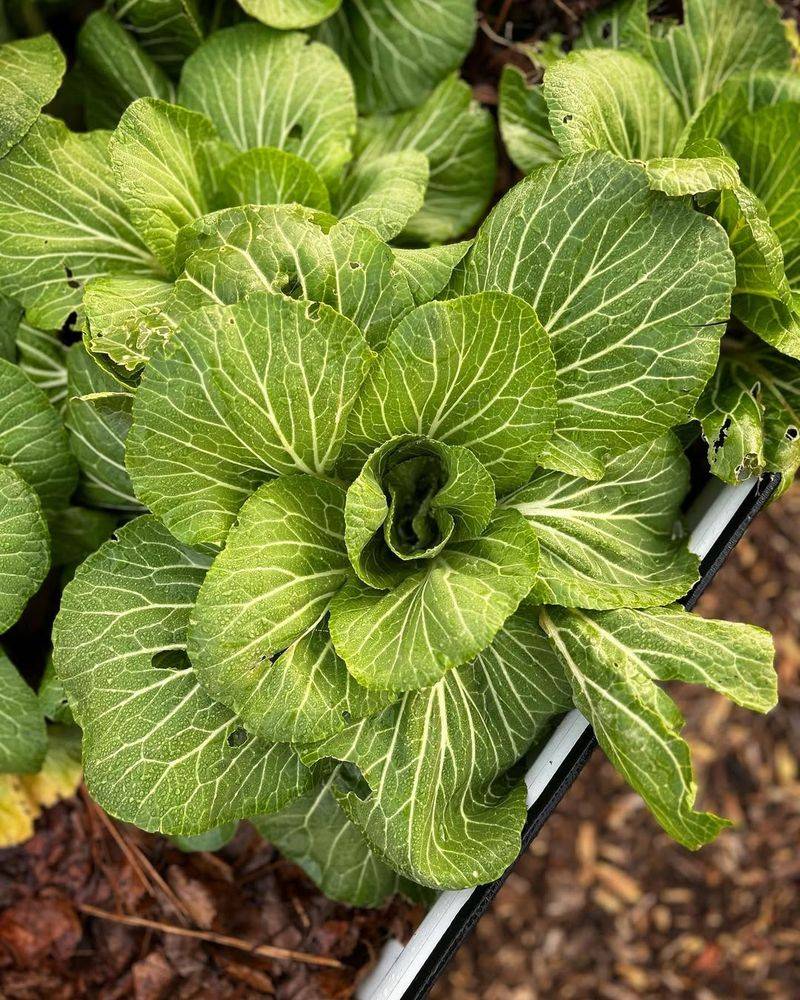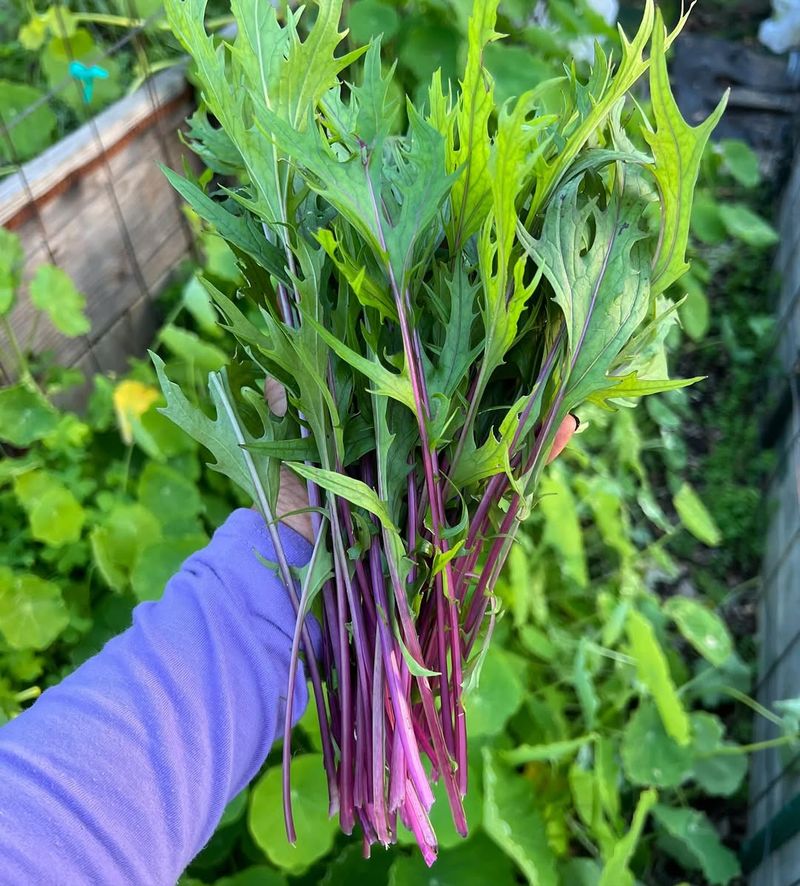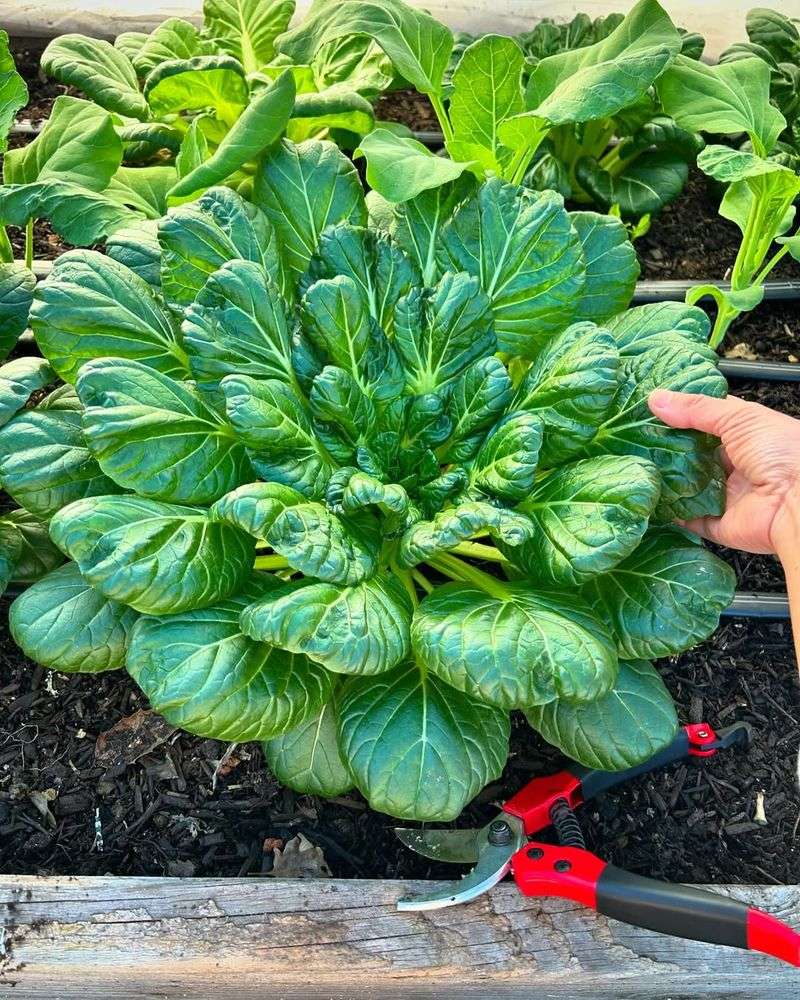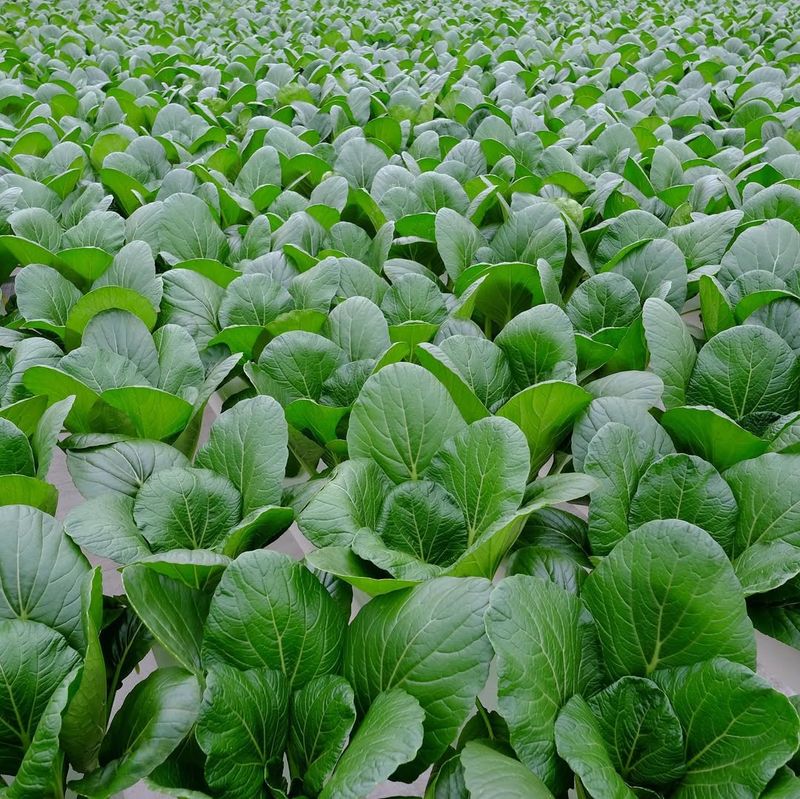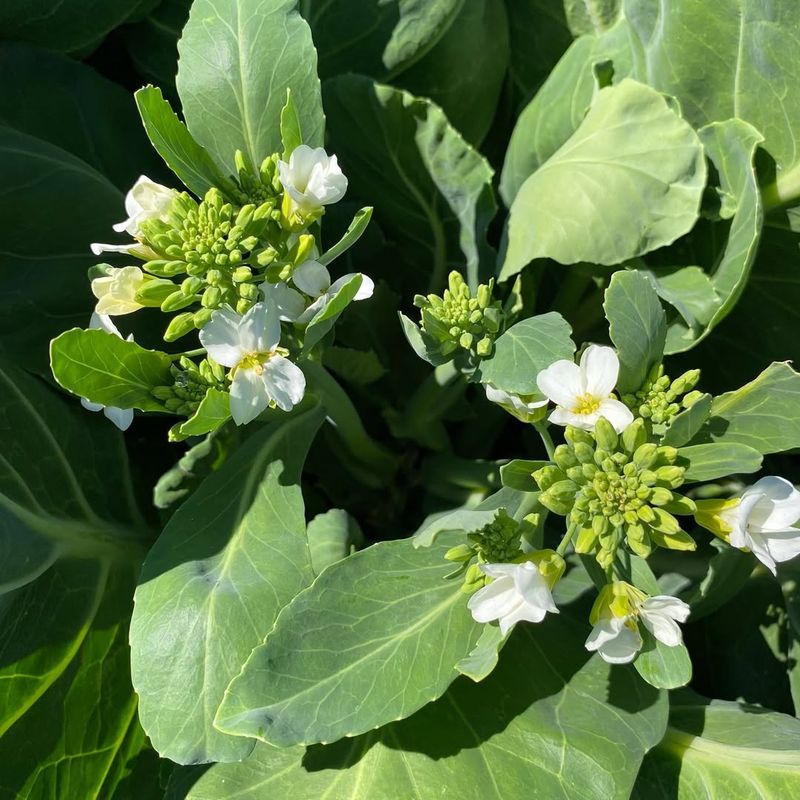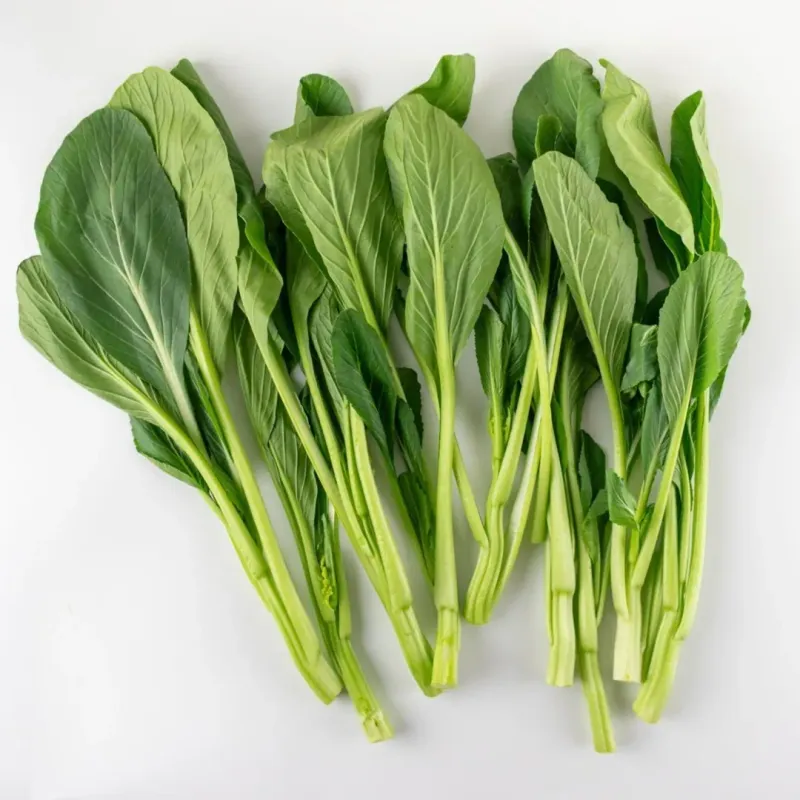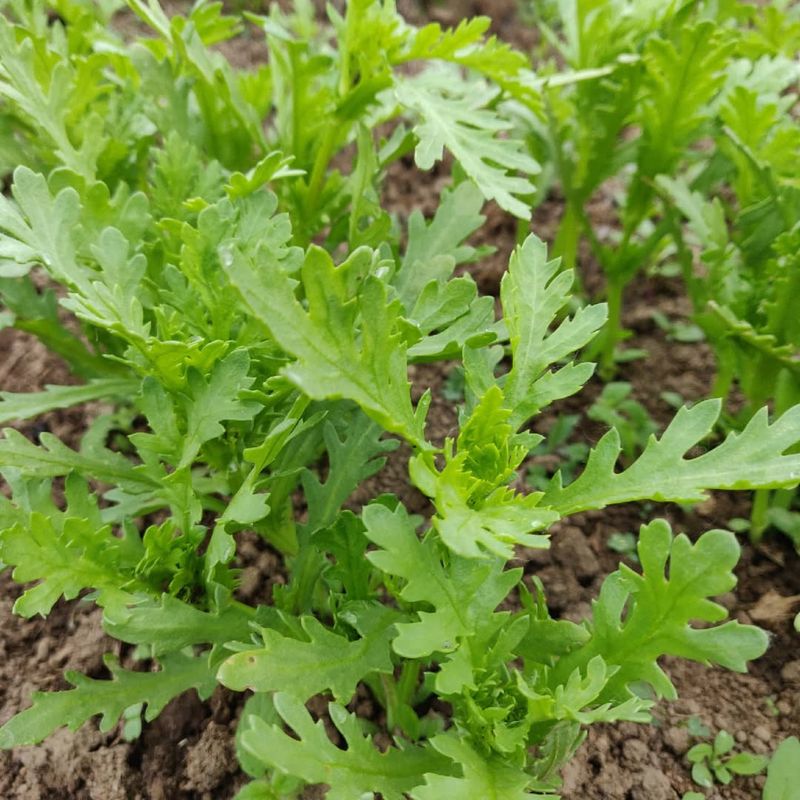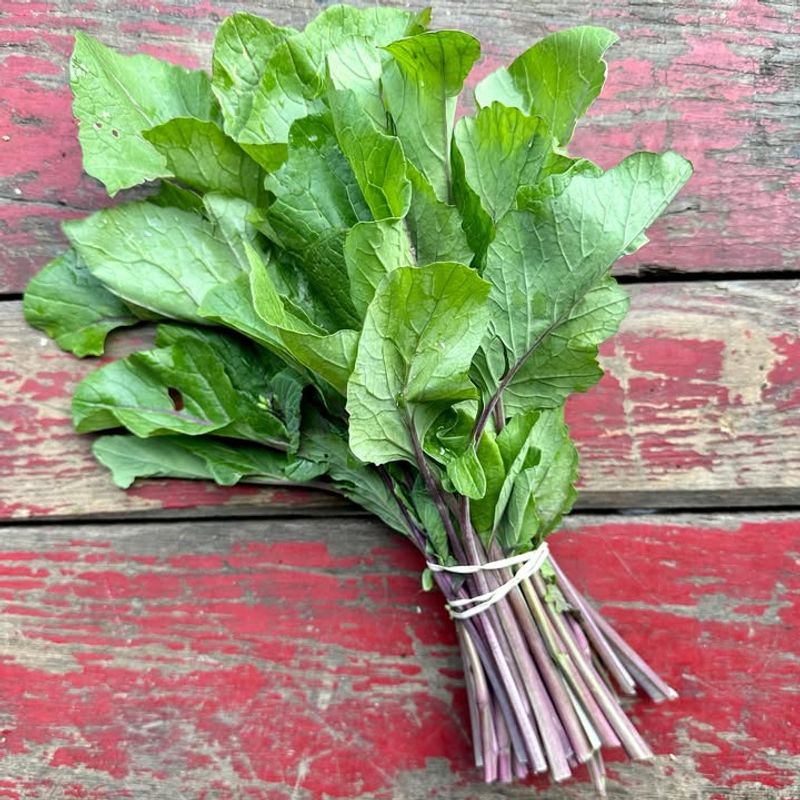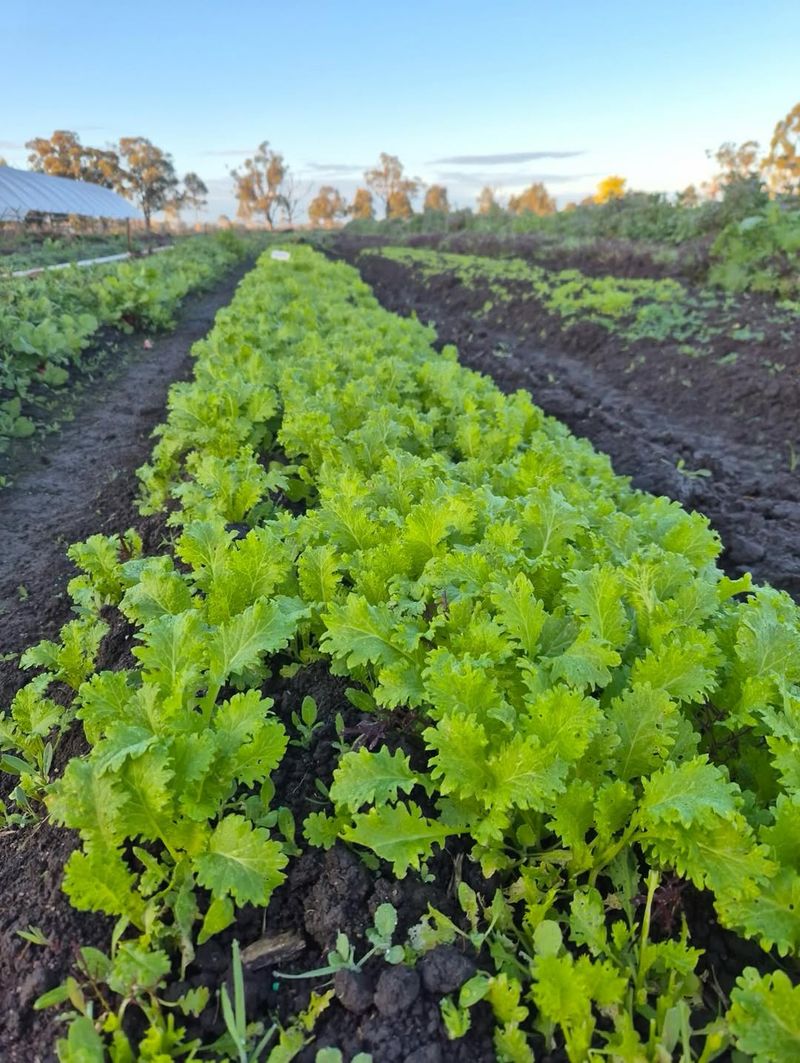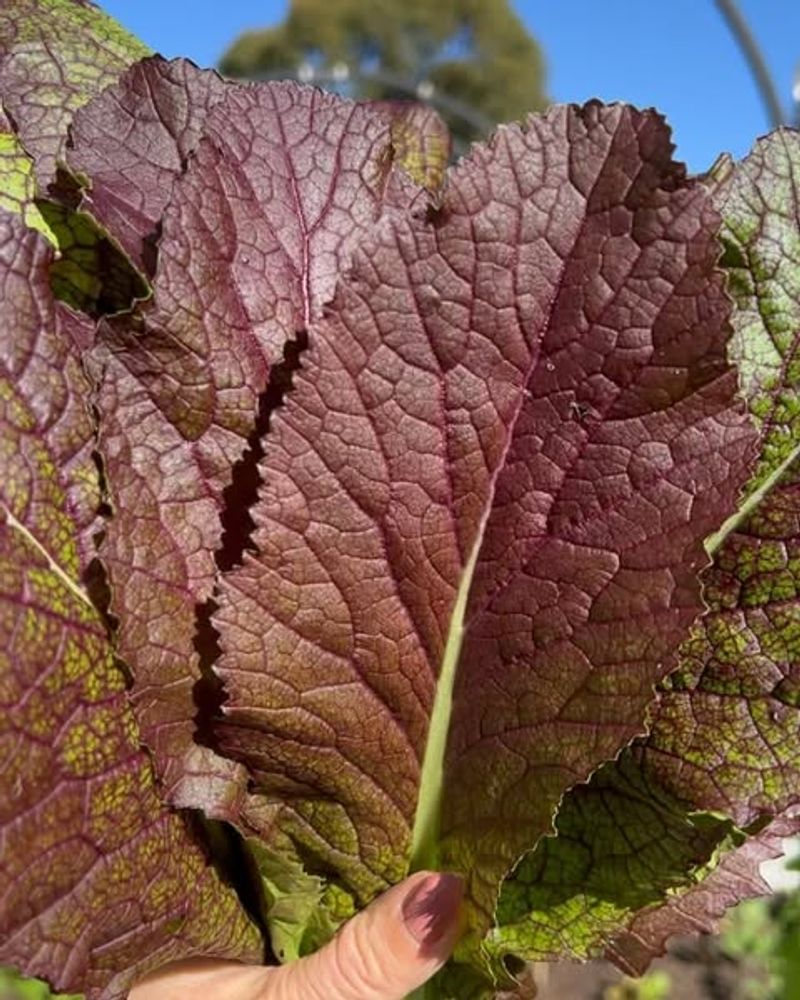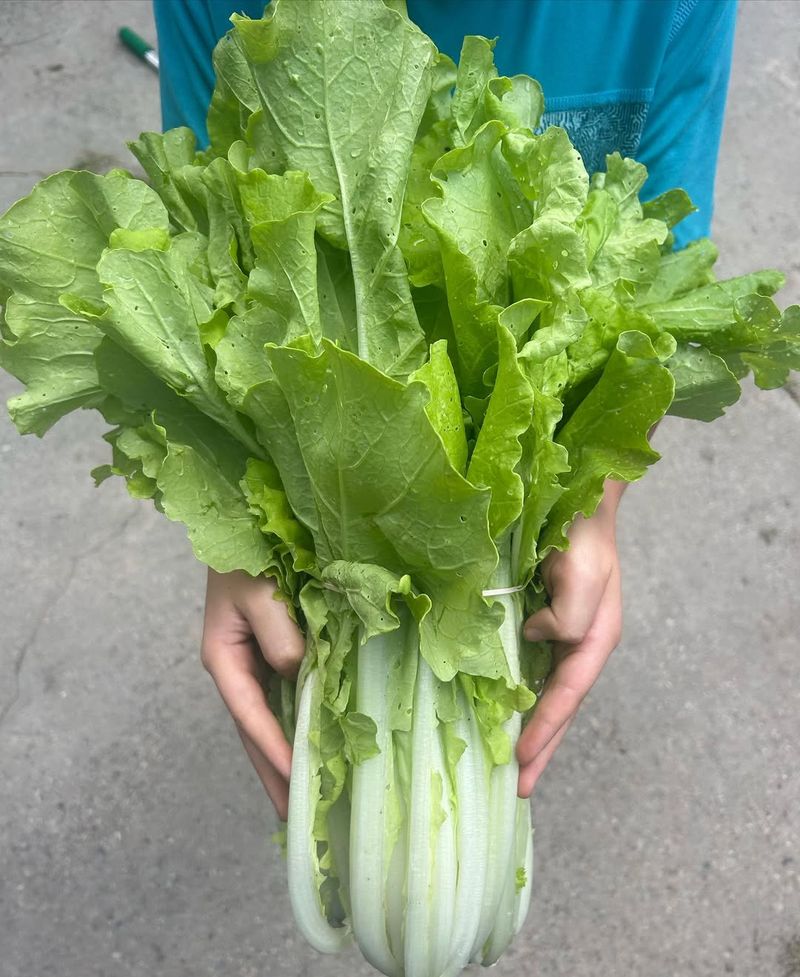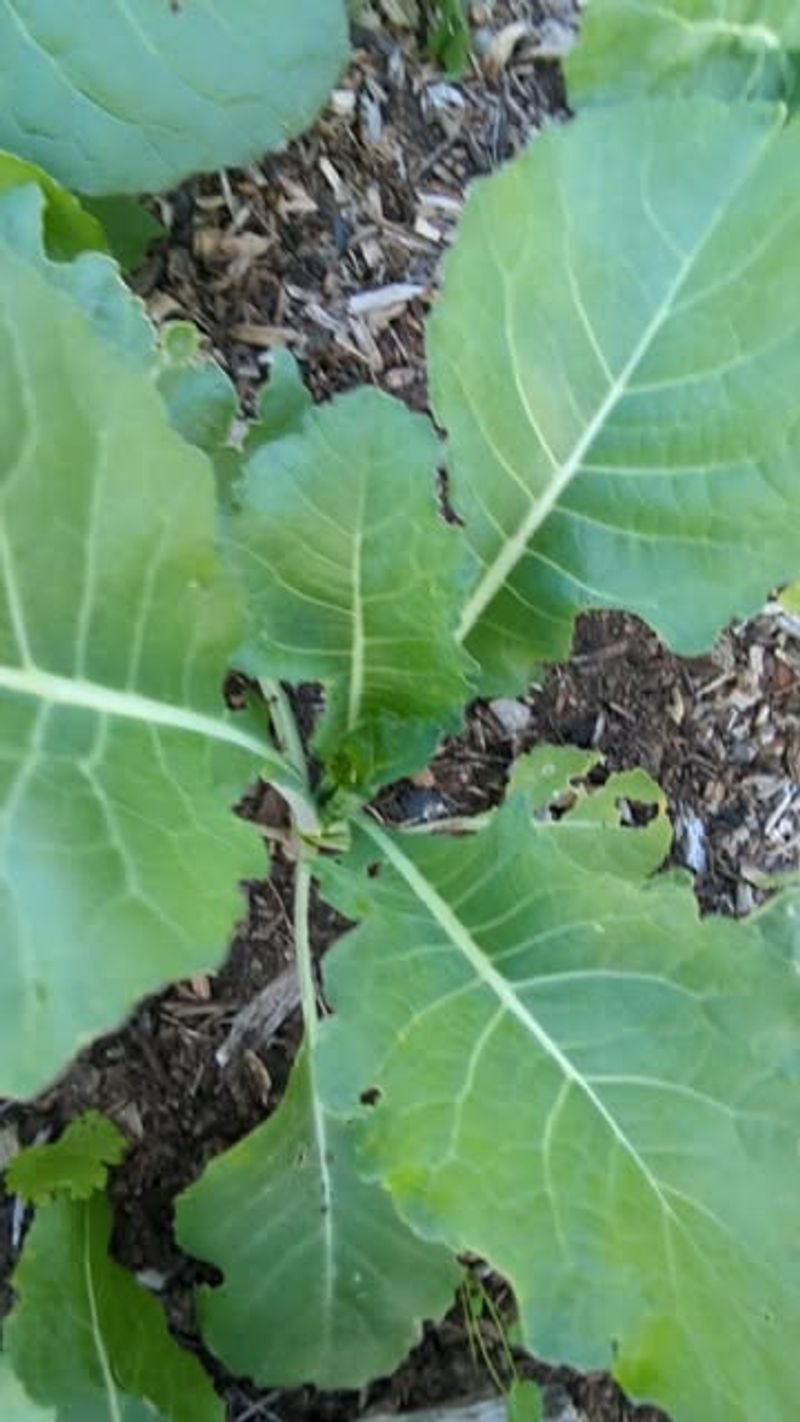Florida’s warm climate makes it perfect for growing greens well into fall and winter. These 12 Asian greens thrive when others slow down.
They’re both nutritious and easy to maintain. Add them to your garden for a fresh harvest through cooler months in Florida.
1. Bok Choy
Quick-growing and incredibly versatile in the kitchen, this crunchy green thrives when temperatures drop in Florida. The stalks remain crisp while the leaves develop a sweeter flavor during cooler weather.
Plant successive crops every few weeks for continuous harvests throughout winter. Even Florida’s occasional cold snaps rarely bother this resilient vegetable, making it perfect for beginning gardeners looking for reliable winter crops.
2. Mizuna
Feathery-leaved mizuna brings a mild peppery kick to winter salads while standing up beautifully to Florida’s occasional cold nights. The deeply serrated leaves create visual interest in both garden beds and on your plate.
Many Florida gardeners appreciate how mizuna rebounds quickly after harvesting, often providing multiple cuttings from a single planting. Its resistance to pests makes maintenance practically effortless during the cooler months.
3. Tatsoi
Resembling a miniature green rose, tatsoi forms a beautiful rosette of spoon-shaped leaves that hug the ground. This growth habit helps it withstand temperature fluctuations common in Florida’s unpredictable winter weather.
The glossy dark leaves contain impressive amounts of vitamin C and calcium. Florida gardeners love tatsoi’s ability to grow happily in partial shade, making it perfect for winter gardens when the sun’s angle is lower.
4. Komatsuna
Often called Japanese mustard spinach, komatsuna delivers mild mustard flavor without overwhelming heat. The glossy leaves stand tall in Florida garden beds, shrugging off light frosts that would damage more tender greens.
Harvest outer leaves continuously while the plant keeps growing new ones from the center. Florida’s winter sunshine provides just enough light for komatsuna to develop its characteristic rich mineral content without bolting prematurely.
5. Gai Lan
Sometimes called Chinese broccoli, gai lan produces delicious stems and leaves with a flavor reminiscent of broccoli but distinctly its own. The blue-green leaves develop sweeter notes during Florida’s mild winter temperatures.
Unlike regular broccoli, you’ll harvest entire stems rather than waiting for large heads. Florida’s climate allows gai lan to produce continuously through winter months when properly succession-planted every few weeks.
6. Yu Choy
Slender stems topped with tender leaves and tiny yellow flowers make yu choy a beautiful addition to winter gardens. The mild flavor resembles a cross between spinach and mustard without the spiciness.
Florida gardeners prize yu choy for its quick growth – often ready to harvest in just 40 days. The entire plant is edible from stem to flower, making it an efficient choice for small garden spaces during the cooler months.
7. Garland Chrysanthemum
Known as shungiku in Japanese cuisine, this unique green sports deeply serrated leaves with a distinctive aroma. The aromatic quality intensifies during Florida’s cooler months, developing complex flavors that enhance winter soups.
Unlike many greens, garland chrysanthemum actually prefers the shorter daylight hours of Florida winters. The plants will eventually produce edible yellow flowers that make beautiful garnishes for seasonal dishes from your winter garden.
8. Hon Tsai Tai
Purple stems supporting deep green leaves make hon tsai tai one of the most ornamental winter greens for Florida gardens. Small yellow flowers appear as the season progresses, adding both beauty and flavor to winter harvests.
The mild mustard flavor intensifies slightly in cooler weather but never becomes overwhelming. Florida gardeners appreciate how this green continues producing through occasional light frosts, bouncing back quickly after cold snaps.
9. Mibuna
Long, narrow leaves grow upright in tight clusters, making mibuna an efficient choice for small Florida winter garden spaces. The mild flavor carries subtle hints of mustard without overwhelming heat or bitterness.
Particularly cold-tolerant, mibuna often survives temperature drops that damage other greens. Florida gardeners find this Japanese green practically maintenance-free during winter months, requiring minimal attention beyond occasional watering.
10. Red Mustard
Dramatic burgundy leaves with frilled edges make red mustard a standout in winter Florida gardens. The spicy flavor mellows considerably during cooler weather while maintaining its distinctive character.
The pigments that create the striking color also contain powerful antioxidants. Florida gardeners often plant red mustard in visible locations where its vibrant foliage creates winter interest alongside more traditional green vegetables.
11. Tokyo Bekana
Ruffled chartreuse leaves form loose, open heads resembling lettuce but with much greater cold tolerance. The mild, sweet flavor makes Tokyo bekana perfect for winter salads when traditional lettuce struggles in Florida gardens.
Rapid growth means you’ll harvest this green just 30 days after planting. Florida’s winter sunshine provides ideal growing conditions for Tokyo bekana, which tends to bolt quickly in warmer weather but thrives during cooler months.
12. Senposai
Created by crossing cabbage with komatsuna, senposai produces enormous leaves with remarkable cold tolerance. The tender texture defies expectations for such a large-leaved plant, remaining delicate even when fully mature.
Florida gardeners appreciate how senposai withstands temperature fluctuations without bolting or developing bitterness. The productive plants continue yielding handfuls of nutritious greens throughout the winter months with minimal care or attention.

